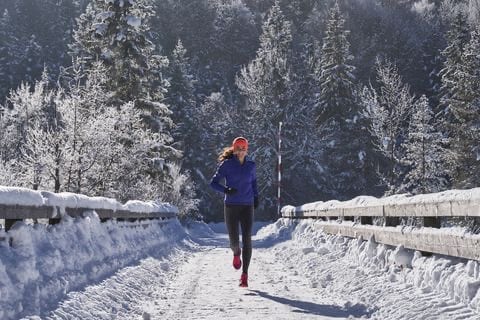Warm sunny days.. Light nights.. Gone! Its Winter!
Living in the UK and dare I say particularly the North West, does mean that for five months of the year running in cold and damp conditions becomes the norm.
By my thinking, there are three groups of winter runners:
- Those that really dislike
- Those that accept it and get on with it
- Those that actually enjoy the experience!
It’s entirely logical that your fitness as you approach the spring and summer will be in part determined to which of the above three groups that you fit into.
First of all, consider your safety. Choose routes that are well lit, and be aware of damp leaves and icy patches. That aside, just venture out! Why not during daylight hours, find a trail in a park. On frosty days, these will be much better for running on, and off road running is something to enjoy…good trail shoes with added grip help.
When running in the evening, and again on dull/gloomy days, be visible. Wear clothing with reflective details, and in the dark wear a protective Hi-Viz top and consider a head torch.
Consider what you need to wear and look to have layers of clothing rather than bulky tops. Ideally a bottom layer to wick away the moisture, a middle layer to retain the heat, and a top layer to guard off the wind and cold. Always consider the wind chill effect to the outside temperature.
Everyone will be different, but most people will warm up within 10 to 15 minutes. Outer layers need to be kept warm. Look to buy a combination of technical running gloves, a buff, snood, and a beanie or similar…there are so many options! Ears and fingers are critical and will not warm up in the same way as the rest of your body. Thermal tights are a must!
Always remember, your ability to exercise will not be impaired provided you maintain normal body temperature. That said, once your temperature dips, your maximum aerobic capacity may be reduced and your heart rate may be slightly lower…this naturally effects your performance. Make sure that you warm up into the run, as fast twitch muscle fibres (the fibres you recruit to run fast or sprint) may be adversely affected, as cold muscles have a reduced ability to generate power.
Finally, in terms of having a cold (and not the single reserve of the winter, the rule of thumb is above and below the neck…above the neck (a head cold) its ok to run but with common sense…below the neck (a chest cold), usually best not to run. Your breathing is impaired.
Winter running can be great fun…just use the above advice.
How will your fitness be once you approach spring and summer!!

